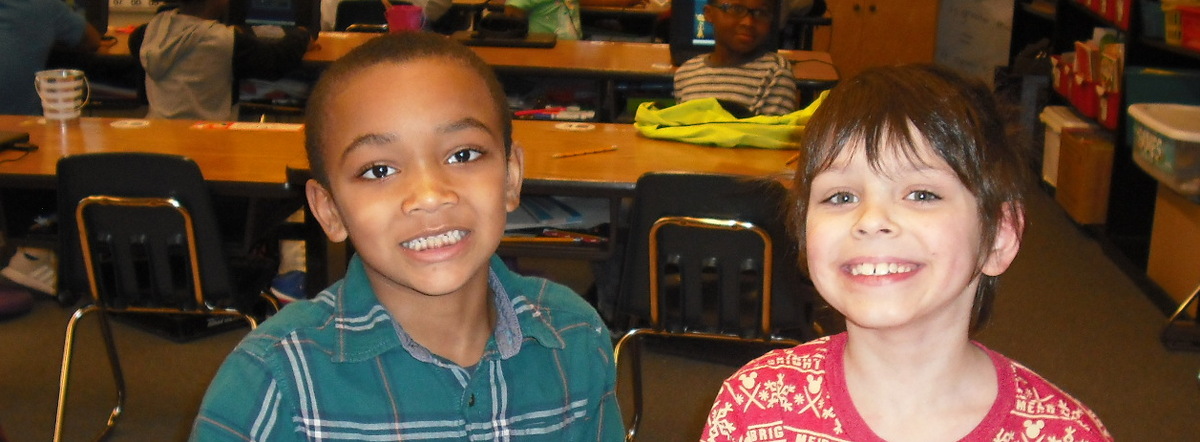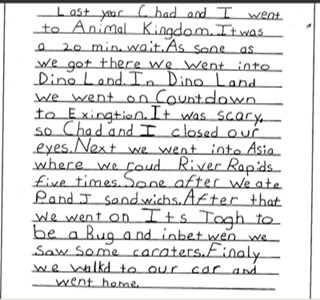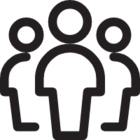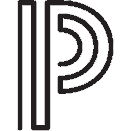Second Grade Learning Goals and Resources
Reading
End of Year Goals
Goals
- Distinguish long and short vowels when reading regularly spelled one-syllable words
- Decode regularly spelled two-syllable words
- Decode words with common prefixes and suffixes
- Ask and answer such questions as who, what, where, when, why, and how to demonstrate an understanding of fiction and nonfiction text
- Describe how characters in a story respond to major events and challenges
- Describe the overall structure of a story
- Compare and contrast two or more versions of the same story
- Identify the main topic of a multi-paragraph text
- Know and use various text features (e.g. captions, bold print, subheadings) to locate key facts
- Use context to confirm or self-correct word recognition and understanding, rereading as necessary
- Read grade-level text orally with accuracy, appropriate rate, and expression
Learning Resources
Learning Tools
- World Book Early World of Learning
Read-along stories and pictures help teach students basic concepts
- World Book Kids
Easy-to-read content for elementary school learners - hundreds of activities, science projects, and experiments
- Storyline Online
Award-winning children’s books read aloud by celebrated actors
- PBS Kids Reading Games
Light, fun online activities that help teach beginning reading skills
Writing
End of Year Goals
Goals
- Write a personal experience narrative; minimum of six sentences
- Write an informational report focused on a topic
- Write a paragraph explaining an opinion with supporting details; minimum of eight sentences
- Use capital letters appropriately
- Use correct end punctuation
- Use commas in a series
- Correctly spell high-frequency words
- Use limited inventive spelling
2nd Grade Writing Sample
Math
End of Year Goals
Goals
- Use addition and subtraction within 100 to solve, explain, and represent one-and two-step word problems with the unknown part in all positions. Second graders will be able to explain their solutions using objects, drawings, and equations with a symbol for the unknown number.
- Demonstrate understanding of place value: the three digits of a three-digit number represent amounts of hundreds, tens and ones.
- Fluently add and subtract within 100 using strategies based on place value, properties of operations, and/or the relationship between addition and subtraction.
- Add and subtract within 1000, using concrete models or drawings and strategies based on place value, properties of operations, and/or the relationship between addition and subtraction; relate the strategy to a written method. Understand that in adding or subtracting three-digit numbers, one adds or subtracts hundreds and hundreds, tens and tens, ones and ones; and sometimes it is necessary to compose or decompose tens or hundreds.
- Partition circles and rectangles into two, three, or four equal shares, describe the shares using the words halves, thirds, half of, a third of, etc., and describe the whole as two halves, three thirds, four fourths. Recognize that equal shares of identical wholes need not have the same shape
Learning Resources
We use Everyday Mathematics (Edition 4), which is a comprehensive Pre-K through grade 6 mathematics program developed by the University of Chicago School Mathematics Project and published by McGraw-Hill Education
Learning Tools for Everyday Mathematics (Edition 4):
- Everyday Math 2nd Grade (EM4)
- EM4 Math at Home: Help organized by section (unit) for Home Link problems (English and Spanish), selected answers, vocabulary definitions, videos, games and more!
Family Letters
Stay up-to-date on what your child is learning in class. Family Letters contain background information, vocabulary, games and more for each section (unit).
- English Family Letters
- Spanish Family Letters (coming soon)
Student Log-in Information
ClassLink - connectED
Use this link to connect to Everyday Mathematics Today’s Lesson, Math Games, Tutorial Videos, Math Toolbox, the Student Resource Book and more.
i-Ready
Once your student has logged into classlink they can access i-Ready Math lessons that are at their level.
Additional Resources
- Becoming a Math Family
A website from the University of Chicago that helps support math learning for 3 to 6-year-olds.
- PBS Kids Math Games
Fun online math games.
- DREME blog
Resources and activities for developing math skills
- GVSU Regional Math & Science Center
Math games and activities you can play at home or (school). Most everything you need is included: Rules, materials, and possible questions. In most cases, a video to show how to play the game is provided.
- Talking Math With Your Kids
Math is everywhere in our world! You'll find lots of ideas for talking about math with your child--some you've never even thought of.
- YouCubed
Engaging and inspiring math games, tasks, videos, and articles to help students develop a "Math Mindset."
Science
Topics Learned
Physical Science - Structure an Properties of Matter
- Sort Objects via Observable Properties
- Properties of Matter
- Intro to States of Matter
- Observing Properties in Nature
- Engineering From Nature
- Intro to Matter being Made of Small Particles
Earth Science - Changing Earth: Today and Over Time
- Major Surface Features, Landforms, Bodies of Water
- Water on Earth as a Solid and Liquid
- Weathering and Water Erosion
- Slow and Rapid Changes to the Shape of Land
- Intro to Plate Tectonics
Life Science - Plant and Animal Relationships
- Observing Habitats
- Plant and Animal Interactions
- Where do Plants and Animals Live
- Field Study (investigate the diverse population and plants and animals in an area)
- Plant Growing Needs
- Plant/Animal interactions
- Different Ways Seeds are Dispersed
- Bees/Pollination
Learning Resources
Learning Tools
- Cereal City Science Website
MPS elementary current science curriculum
Additional Resources
Social Studies
Topics Learned
Projected Based Learning Units
- History: Students study the history of their local community (Muskegon), focusing on changes from the past compared to today. They will learn about people or groups who have made contributions to Muskegon and will gather data from community residents and resources about the past.
- Geography: Students learn the geography of the Muskegon area by constructing maps, touring the community and comparing human and physical characteristics of our community. We examine the role bodies of water play in the Muskegon area and ways we can interact with our environment in positive ways.
- Economics: Students gain a basic understanding of a market economy by visiting local businesses and learning how they operate (Ryke’s Bakery, McDonald’s Candies, etc.). They learn about the natural, human, and capital resources needed to produce goods or provide a service. Students then use their learning to start their own small, school-based business. They will create a product to sell as well as a business plan to promote this product. Proceeds are donated to a local non-profit organization.
- Civics/Government: Students focus on the purpose of government, especially local government, and the difference between government and private action. We will learn about services provided by local governments as well as how the lives of people are affected by government. To conclude the year, students will create a proposal for an elected official (school board or city council member) addressing a change they would like to see in our community.
Learning Resources
Learning Tools
- Our Curriculum for Grade 2: Project PLACE Units
- Discovery Education: Students log in through Classlink
